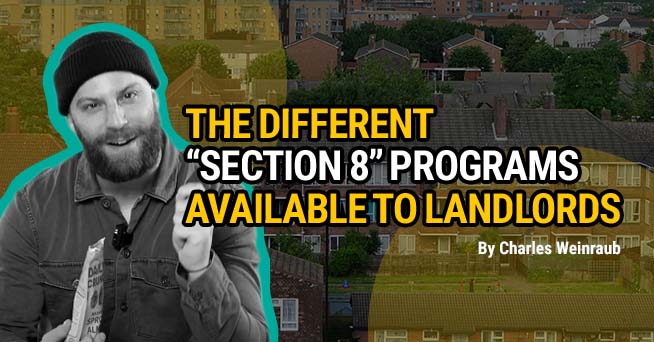
A common misconception is that “Section 8” refers to all subsidized housing programs, but Section 8 is the name of a specific program and there are many similar programs available. For the purposes of this article we’ll discuss housing programs available on Long Island because it’s the area I’m familiar with. To help you understand the differences between these programs I’ll describe them and discuss some of my experience with them.
Section 8 – Each township has its own Section 8 program. The Town of Hempstead, the Town of Islip, etc., all have their own programs. Section 8 is a voucher-based program, and the vouchers are issued to the tenants themselves. The tenant can take this voucher from rental to rental, and the voucher acts as a substitute for cash. The Section 8 program typically pays landlords directly via check or wire transfer a percentage of the rent that’s due. The tenant is required to pay an amount of the rent equal to up to 30% of their monthly income. The rent that can be charged is set nationwide by HUD (The U.S. Department of Housing and Development) on a county-by-county basis. Typically, Nassau and Suffolk County have the same FMR (Fair Market Rent) set by HUD. As the landlord, I recommend you take the FMR and subtract the cost of utilities with the assumption that the tenant will be paying for them separately from their rent. These utility deductions will be dependent on the nature of the building. I also recommend that you attend some of the monthly forums that each town’s Section 8 program holds which provide a lot of information for landlords who are interested in working with Section 8 programs.
DSS – DSS (Department of Social Services) programs can be used in a few ways. It can be used in conjunction with Section 8 if a tenant isn’t able to meet rent requirements, and in some cases DSS can pay a tenant’s entire rent. A disadvantage of working with DSS vs. Section 8 or other programs is that whereas you have a lease agreement with the program itself in the other cases, with DSS the lease is with the tenant themselves. There is no case worker to turn to in the event of any problems and in the worst case you’ll need to proceed with an eviction yourself. There’s little risk of a tenant losing their voucher (as compared to a program like Section 8) as DSS is generally intended to be a temporary benefit for the tenant, so tenants have less incentive to maintain good relationships with their landlords.
CDC – CDC (Community Development Corporation) is a not-for-profit organization funded by the government that operates similarly to Section 8. There are case workers who help both the tenants and landlords keep things running smoothly, and it is an excellent program to work with. This is my preferred program to work with and I have a large number of CDC tenants.
Temporary Housing Programs – There are a number of programs that provide temporary housing, for example if someone loses their home in a fire they may need housing for a few months while things are being sorted out. These are excellent programs to work with as a landlord; these organizations will pay high rent rates in exchange for the flexibility of short-term leases of furnished rental units. These are great programs, but the demand for them is less than others which is why they’re less well known.
Options for Community Living – Options for Community Living is another not-for-profit organization, similar to CDC, funded by Medicare/Medicaid. They are typically the leaseholder as opposed to the tenants themselves, and they will often pay full FMR and utilities. In many cases they will rent a house with multiple bedrooms and place tenants in each room. This is another excellent program and one I recommend working with.
Homeless Shelters – Finally, let’s talk about homeless shelters. Homeless shelters have the potential to be a very profitable investment, but you need to make sure you can secure the proper permits which isn’t easy. Consider also that compared with other types of real estate investments there is higher risk associated with homeless shelters. There are two ways to proceed:
These are just a few of the types of programs, Section 8 and otherwise, which are available for you to work with as a landlord on Long Island. I highly encourage you to investigate all the options available to you by speaking to both the people who run these programs and property owners who work with them, you may find something that’s a perfect fit for your business and your property.